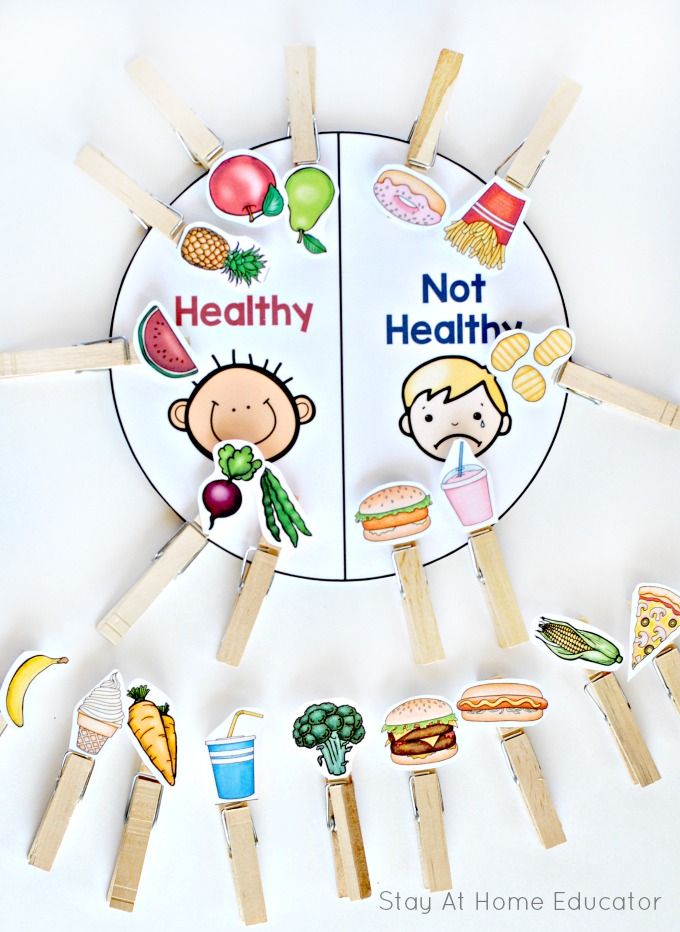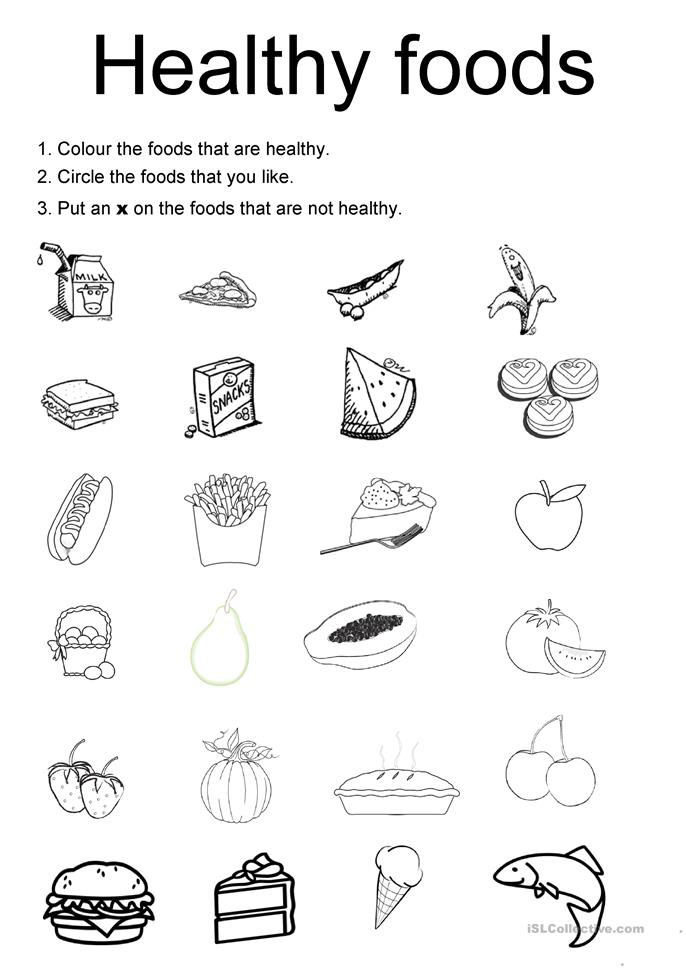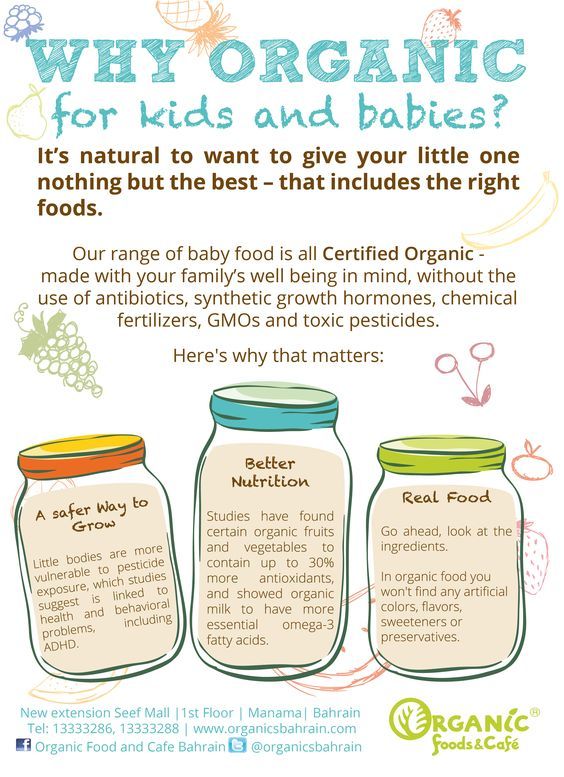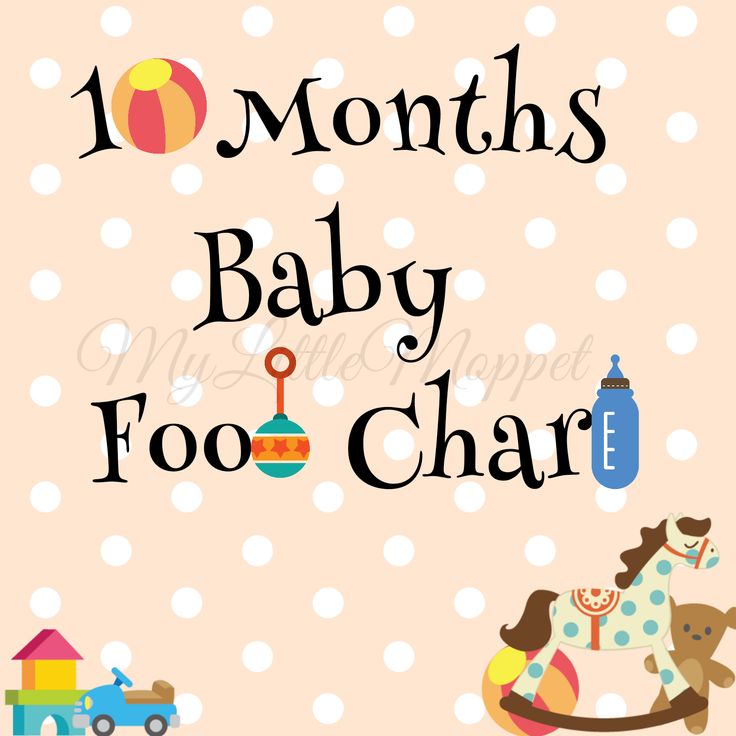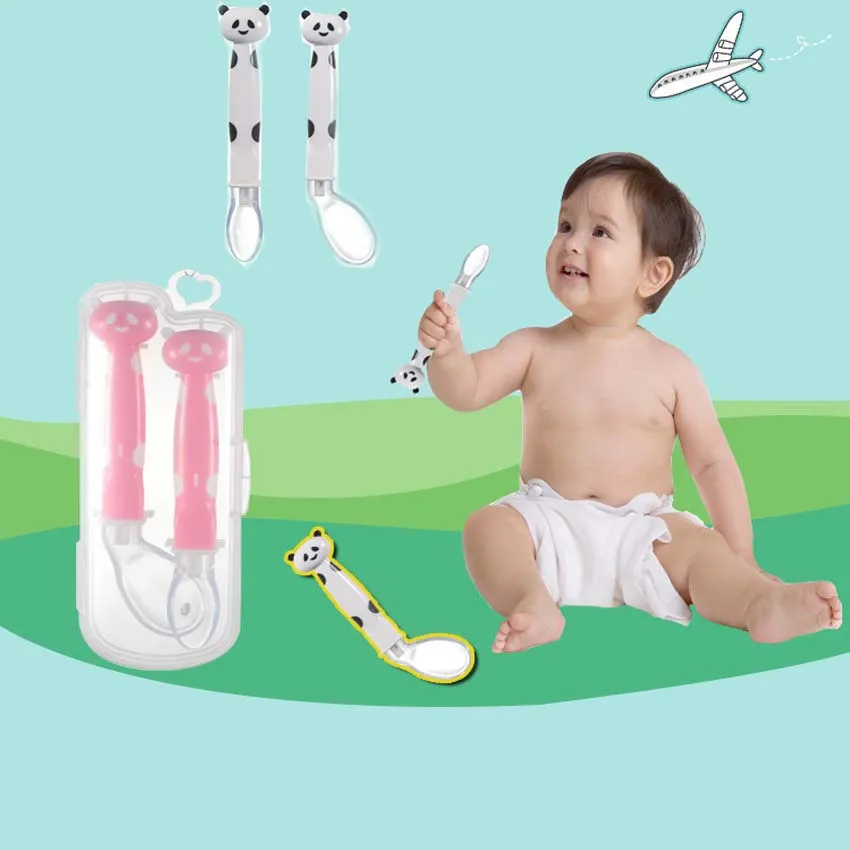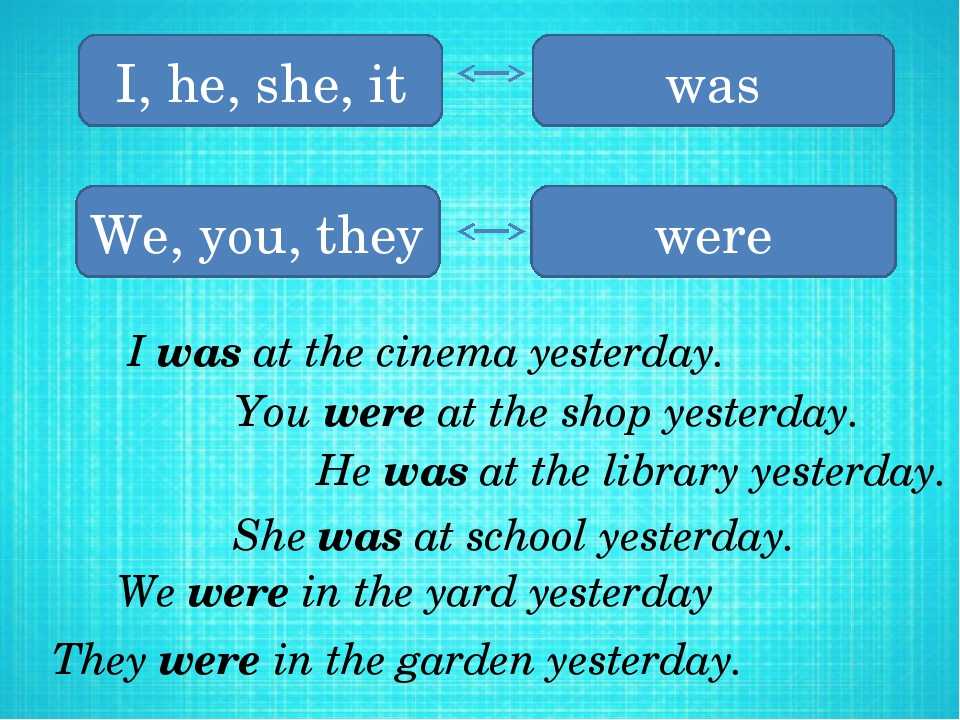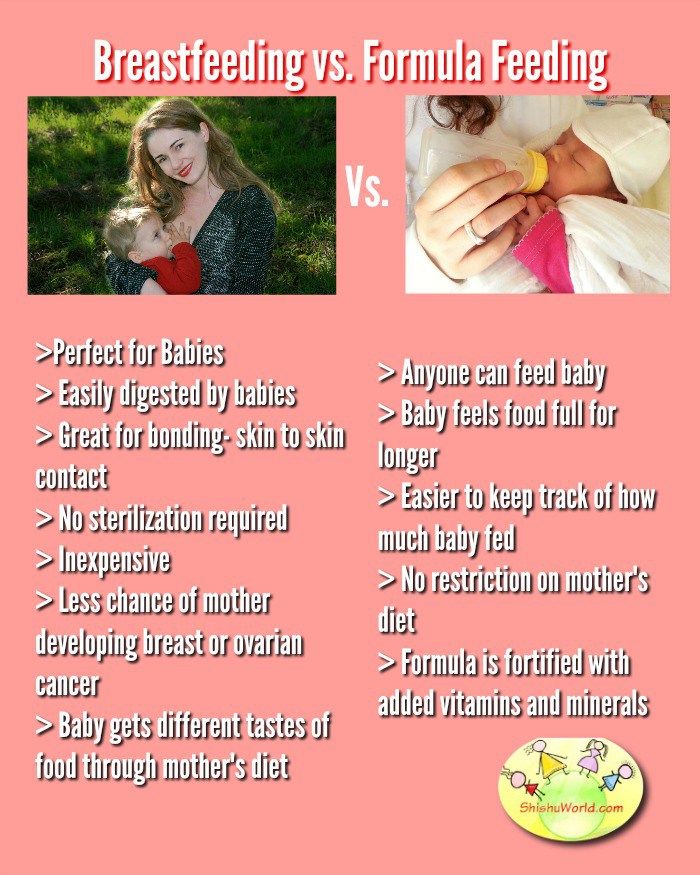How many ounces of breastmilk should i feed my baby
How much expressed milk will my baby need? • KellyMom.com
By Kelly Bonyata, BS, IBCLC
- How much milk do babies need?
- What if baby is eating solid foods?
- Is baby drinking too much or too little expressed milk?
- Other ways of estimating milk intake
- References
Image credit: Jerry Bunkers on flickr
How much milk do babies need?
Many mothers wonder how much expressed breastmilk they need to have available if they are away from baby.
.
In exclusively breastfed babies, milk intake increases quickly during the first few weeks of life, then stays about the same between one and six months (though it likely increases short term during growth spurts). Current breastfeeding research does not indicate that breastmilk intake changes with baby’s age or weight between one and six months. After six months, breastmilk intake will continue at this same level until — sometime after six months, depending in baby’s intake from other foods — baby’s milk intake begins to decrease gradually (see below).
The research tells us that exclusively breastfed babies take in an average of 25 oz (750 mL) per day between the ages of 1 month and 6 months. Different babies take in different amounts of milk; a typical range of milk intakes is 19-30 oz per day (570-900 mL per day).
We can use this information to estimate the average amount of milk baby will need at a feeding:
- Estimate the number of times that baby nurses per day (24 hours).
- Then divide 25 oz by the number of nursings.
- This gives you a “ballpark” figure for the amount of expressed milk your exclusively breastfed baby will need at one feeding.
Example: If baby usually nurses around 8 times per day, you can guess that baby might need around 3 ounces per feeding when mom is away. (25/8=3.1).
What if baby is eating solid foods?
Sometime between six months and a year (as solids are introduced and slowly increased) baby’s milk intake may begin to decrease, but breastmilk should provide the majority of baby’s nutrition through the first year. Because of the great variability in the amount of solids that babies take during the second six months, the amount of milk will vary, too. One study found average breastmilk intake to be 30 oz per day (875 ml/day; 93% of total intake) at 7 months and 19 oz (550 ml/day; 50% of total energy intake) at 11-16 months.
Because of the great variability in the amount of solids that babies take during the second six months, the amount of milk will vary, too. One study found average breastmilk intake to be 30 oz per day (875 ml/day; 93% of total intake) at 7 months and 19 oz (550 ml/day; 50% of total energy intake) at 11-16 months.
Several studies have measured breastmilk intake for babies between 12 and 24 months and found typical amounts to be 14-19 oz per day (400-550 mL per day). Studies looking at breastmilk intake between 24 and 36 months have found typical amounts to be 10-12 oz per day (300-360 mL per day).
Is baby drinking too much or too little expressed milk?
Keep in mind that the amount of milk that baby takes at a particular feeding will vary, just as the amount of food and drink that an adult takes throughout the day will vary. Baby will probably not drink the same amount of milk at each feeding. Watch baby’s cues instead of simply encouraging baby to finish the bottle.
If your baby is taking substantially more than the average amounts, consider the possibility that baby is being given too much milk while you are away.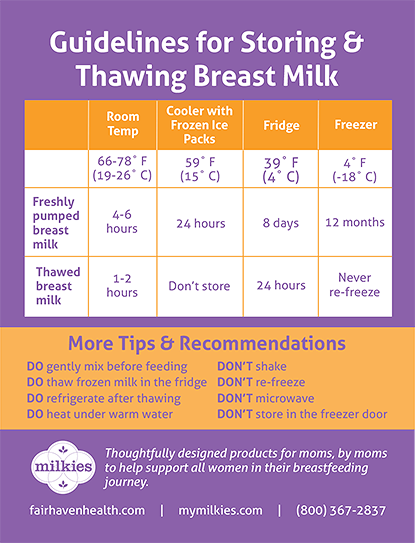 Things that can contribute to overfeeding include:
Things that can contribute to overfeeding include:
- Fast flow bottles. Always use the lowest flow bottle nipple that baby will tolerate. Even with a slower flowing nipple, it is important to pace the bottle feed to allow baby to better control his intake.
- Using bottle feeding as the primary way to comfort baby. Some well-meaning caregivers feed baby the bottle every time he makes a sound. Use the calculator above to estimate the amount of milk that baby needs, and start with that amount. If baby still seems to be hungry, have your caregiver first check to see whether baby will settle with walking, rocking, holding, etc. before offering another ounce or two.
- Baby’s need to suck. Babies have a very strong need to suck, and the need may be greater while mom is away (sucking is comforting to baby). A baby can control the flow of milk at the breast and will get minimal milk when he mainly needs to suck. When drinking from a bottle, baby gets a larger constant flow of milk as long as he is sucking.
 If baby is taking large amounts of expressed milk while you are away, you might consider encouraging baby to suck fingers or thumb, or consider using a pacifier for the times when mom is not available, to give baby something besides the bottle to satisfy his sucking needs.
If baby is taking large amounts of expressed milk while you are away, you might consider encouraging baby to suck fingers or thumb, or consider using a pacifier for the times when mom is not available, to give baby something besides the bottle to satisfy his sucking needs. - If, after trying these suggestions, you’re still having a hard time pumping enough milk, see I’m not pumping enough milk. What can I do?
If baby is taking significantly less expressed milk than the average, it could be that baby is reverse-cycling, where baby takes just enough milk to “take the edge off” his hunger, then waits for mom to return to get the bulk of his calories. Baby will typically nurse more often and/or longer than usual once mom returns. Some mothers encourage reverse cycling so they won’t need to pump as much milk. Reverse cycling is common for breastfed babies, especially those just starting out with the bottle.
If your baby is reverse cycling, here are a few tips:
- Be patient.
 Try not to stress about it. Consider it a compliment – baby prefers you!
Try not to stress about it. Consider it a compliment – baby prefers you! - Use small amounts of expressed milk per bottle so there is less waste.
- If you’re worrying that baby can’t go that long without more milk, keep in mind that some babies sleep through the night for 8 hours or so without mom needing to worry that baby is not eating during that time period. Keep an eye on wet diapers and weight gain to assure yourself that baby is getting enough milk.
- Ensure that baby has ample chance to nurse when you’re together.
Other ways of estimating milk intake
There are various ways of estimating the amount of milk intake related to the weight of the baby and the age of the baby, based upon formula intake – research has shown that after the early weeks these methods overestimate the amount of milk that baby actually needs. These are the estimates that we used for breastfed babies for years, with the caveat that most breastfed babies don’t take as much expressed milk as estimated by these methods. Current research tells us that breastmilk intake is quite constant after the first month and does not appreciably increase with age or weight, so the current findings are validating what moms and lactation counselors have observed all along.
Current research tells us that breastmilk intake is quite constant after the first month and does not appreciably increase with age or weight, so the current findings are validating what moms and lactation counselors have observed all along.
More:
- Breast Versus Bottle: How much milk should baby take? By Nancy Mohrbacher, IBCLC, FILCA
- Supplementation Guidelines from LowMilkSupply.org
References
Onyango, Adelheid W., Receveur, Olivier and Esrey, Steven A. The contribution of breast milk to toddler diets in western Kenya. Bull World Health Organ, 2002, vol.80 no.4. ISSN 0042-9686.
Salazar G, Vio F, Garcia C, Aguirre E, Coward WA. Energy requirements in Chilean infants. Arch Dis Child Fetal Neonatal Ed. 2000 Sep;83(2):F120-3.
Kent JC, Mitoulas L, Cox DB, Owens RA, Hartmann PE. Breast volume and milk production during extended lactation in women. Exp Physiol. 1999 Mar;84(2):435-47.
Persson V, Greiner T, Islam S, and Gebre-Medhin M.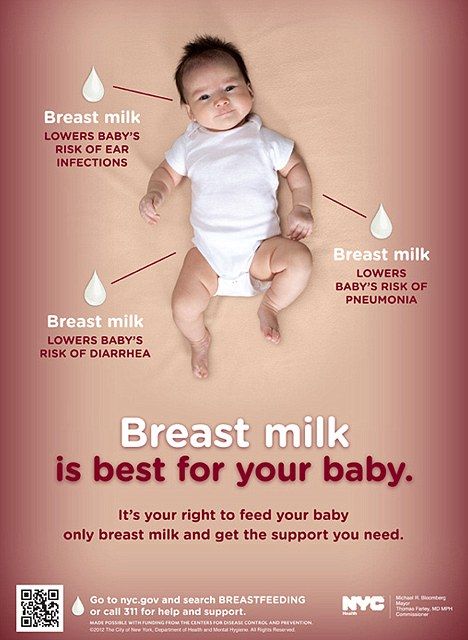 The Helen Keller international food-frequency method underestimates vitamin A intake where sustained breastfeeding is common. Food and Nutrition Bulletin, vol.19 no.4. Tokyo, Japan: United Nations University Press, 1998.
The Helen Keller international food-frequency method underestimates vitamin A intake where sustained breastfeeding is common. Food and Nutrition Bulletin, vol.19 no.4. Tokyo, Japan: United Nations University Press, 1998.
Cox DB, Owens RA, Hartmann PE. Blood and milk prolactin and the rate of milk synthesis in women. Exp Physiol. 1996 Nov;81(6):1007-20.
Dewey KG, Heinig MJ, Nommsen LA, Lonnerdal B. Maternal versus infant factors related to breast milk intake and residual milk volume: the DARLING study. Pediatrics. 1991 Jun;87(6):829-37.
Neville MC, et al. Studies in human lactation: milk volumes in lactating women during the onset of lactation and full lactation. Am J Clin Nutr. 1988 Dec;48(6):1375-86.
Dewey KG, Finley DA, Lonnerdal B. Breast milk volume and composition during late lactation (7-20 months). J Pediatr Gastroenterol Nutr. 1984 Nov;3(5):713-20.
Butte NF, Garza C, Smith EO, Nichols BL. Human milk intake and growth in exclusively breast-fed infants. J Pediatr. 1984 Feb;104(2):187-95.
J Pediatr. 1984 Feb;104(2):187-95.
Dewey KG, Lonnerdal B. Milk and nutrient intake of breast-fed infants from 1 to 6 months: relation to growth and fatness. J Pediatr Gastroenterol Nutr. 1983;2(3):497-506.
Brown K, Black R, Robertson A, Akhtar N, Ahmed G, Becker S. Clinical and field studies of human lactation: methodological considerations. Am J Clin Nutr 1982;35:745-56.
Jelliffe D, Jelliffe E. The volume and composition of human milk in poorly nourished communities: a review. Am J Clin Nutr 1978;31:492-515.
| Summary of Research Data | ||||
| Baby’s Age | Average Milk Intake per 24 hours | Reference | ||
| g | ml | oz | ||
| 5 days | 498 +/- 129 g | 483 ml | 16 oz | Neville 1988 |
| 1 mo | 728 g | 706 ml | 24 oz | Salazar 2000 |
| 1 mo | — | 673 ml | 23 oz | Dewey 1983 |
| 1 mo | 708 +/- 54.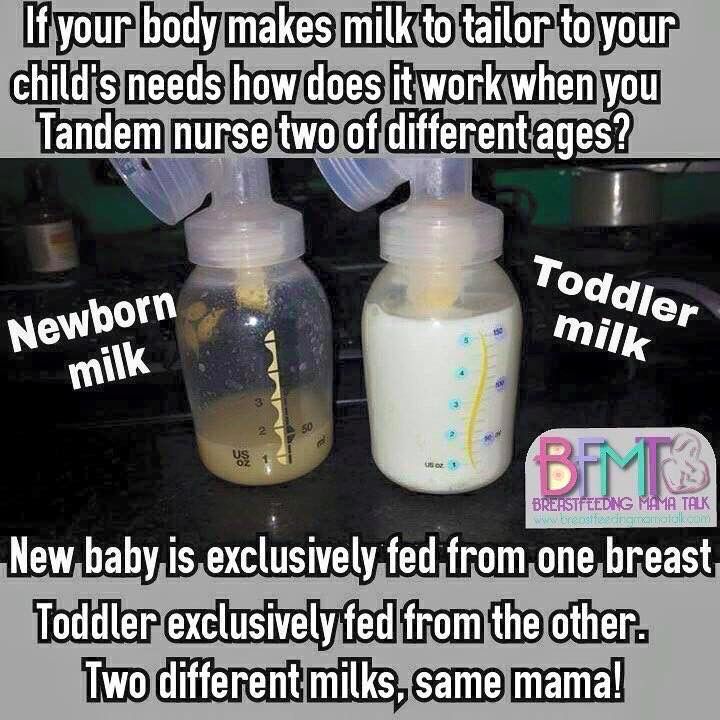 7 g 7 g | 687 ml | 23 oz | Cox 1996 |
| 1-6 mo | 453.6+/-201 g per breast | 440 ml x2 = 880 ml | 30 oz | Kent 1999 |
| 3 mo | 818 g | 793 ml | 27 oz | Dewey 1991 |
| 3-5 mo | 753 +/- 89 g | 730 ml | 25 oz | Neville 1988 |
| 6 mo | — | 896 ml | 30 oz | Dewey 1983 |
| 6 mo | 742 +/- 79.4 g | 720 ml | 24 oz | Cox 1996 |
| 7 mo | — | 875 ml (93% of total energy intake) | 30 oz | Dewey 1984 |
| 11-16 mo | — | 550 ml (50% of total energy intake) | 19 oz | Dewey 1984 |
| 11-16 mo | 502 +/- 34 g | 487 ml (32% of total energy intake) | 16.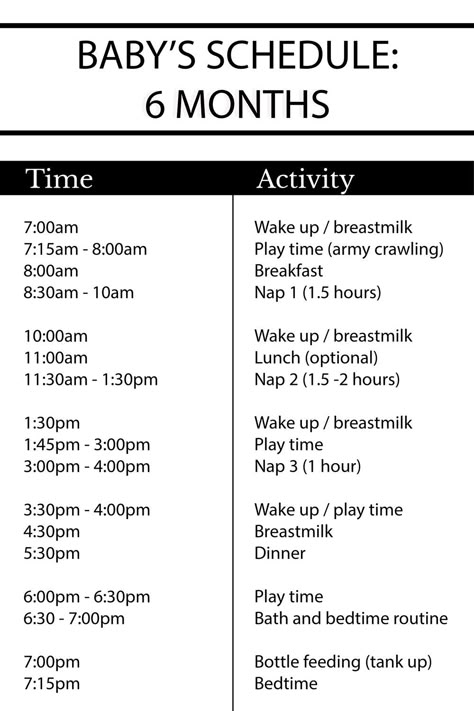 5 oz 5 oz | Onyango 2002 |
| 12-17 mo | 563 g | 546 ml | 18 oz | Brown 1982 |
| 12-23 mo | 548 g | 532 ml | 18 oz | Persson 1998 |
| 15 mo | 208.0+/-56.7 g per breast | 202 ml x2 = 404 ml | 14 oz | Kent 1999 |
| 18-23 mo | 501 g | 486 ml | 16 oz | Brown 1982 |
| >24 mo | 368 g | 357 ml | 12 oz | Brown 1982 |
| 24-36 mo | 312 g | 303 ml | 10 oz | Persson 1998 |
| Specific Gravity of Mature Human Milk = 1.031, so Density of Mature Human Milk ~ 1.031 g/ml;1 oz = 29.6 ml;Numbers in gray were derived using the above conversion factors. | ||||
Baby feeding chart - How many ounces of breastmilk should a baby eat?– Nested Bean
Feeding is one of the first activities you'll do with your little one, and you'll spend lots of time doing it as a new parent! Whether your baby is formula-fed, breastfed, or eating solid foods, feeding them the right amount is vital for their development.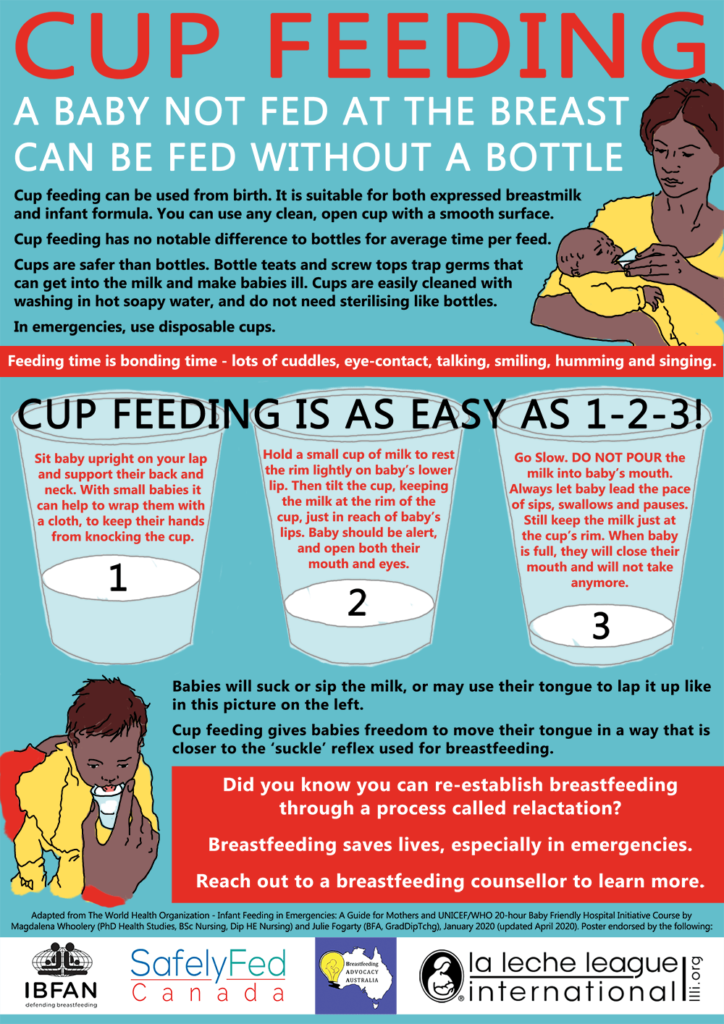
Read on to learn more about how much breast milk, formula, and solid food you need to keep your baby healthy at any age.
From the experts: baby feeding
'It is important to remember all babies are different―some like to snack more often, and others drink more at one time and go longer between feedings. However, most babies will drink more and go longer between feedings as they get bigger and their tummies can hold more milk.'
- Sanjeev Jain, MD, Healthy Children
In this article:
-
Breast milk feedings and amounts by age
-
Formula feeding and amounts by age
-
Solid food feedings and amounts by age
-
Baby feeding FAQ
Breast milk feedings and amounts by age
Though breastfeeding has a whole host of benefits, from providing bonding time with your baby to giving them all the nutrients they need to grow and develop, it can be tricky to know how much they're actually drinking if you aren't pumping!
If you're feeding your baby directly from the breast, they'll likely want to eat little and often at first - every 1-3 hours for the first few weeks. As they get older, this will decrease to longer feeds every 2-4 hours, and you may include a stretch of time between feedings at night as your baby sleeps.
As they get older, this will decrease to longer feeds every 2-4 hours, and you may include a stretch of time between feedings at night as your baby sleeps.
Once they reach 6 months of age and you start introducing solid food into their diet, the amount of breastfeeding and ounces of milk per feeding will vary depending on how much food they're eating.
If you're choosing to primarily pump breast milk, you'll likely find it a lot easier to figure out just how much milk your baby is getting. However, this doesn't mean you know the correct amount for each age! To help you out, we've created a table stating how much breast milk to give your baby and how often:
| Age | Time between feedings | Ounces per feeding |
| 0-1 Month | 2-3 hours | 1-3 ounces |
| 1-3 Months | 3-4 hours | 3-4 ounces |
| 3-6 months | 4-6 hours | 4-8 ounces |
| 6-9 months | 4-6 hours | 6-8 ounces |
| 9-12 months | 5-8 hours | 7-8 ounces |
Remember that this table is only a rough guide - your baby is unique, and they might be perfectly healthy eating more or less than described here.
If you're unsure that your baby is consuming the right amount of breast milk, you should consult your pediatrician for more advice.
Formula feeding and amounts by age
As well as being more convenient for many parents and more accessible for dads, formula-fed babies can also be easier to feed the correct amount as you can more effectively measure how much they're eating.
Generally speaking, formula-fed babies tend to take fewer feedings than breastfed babies and will eat more in a single feed, but this might be different for your own baby!
The American Academy of Pediatrics recommends that your baby has around 2 1/2 oz of formula per day for every pound of body weight - a baby who weighs ten pounds will therefore need 25 ounces in a 24-hour period, for instance.
To make it easy, we've put together a table with the recommended amounts of formula according to your baby's age:
| Age | Time between feedings | Ounces per Feeding |
| 0-2 weeks | 2-3 hours | 1 to 2 ounces |
| 2 weeks - 2 months | 3-4 hours | 2-3 ounces |
| 2-4 months | 4-5 hours | 4-6 ounces |
| 4-6 months | 4-6 hours | 5-8 ounces |
Once again, you might find that your baby can't quite drink as much formula as this table says, or that they cry for more milk between feedings.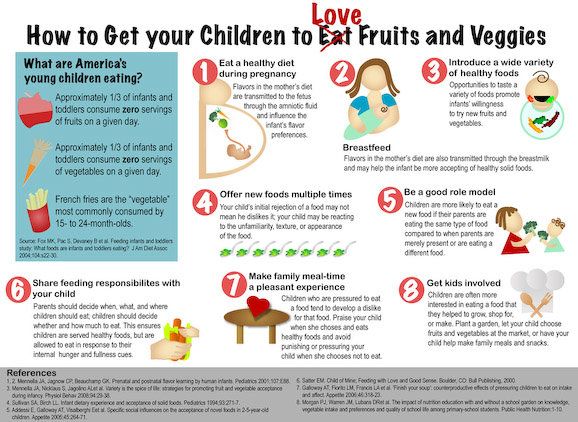
Ultimately, you should always follow your baby's lead when it comes to their basic needs - they know how much milk they need to drink better than a chart does! Therefore, just use these tables as a rough guide that you can adjust later down the line if you need to.
Solid food feedings and amounts by age
Once your baby is 6 months old, they'll have reached some of the developmental milestones that mean they can start eating solid food. These include sitting up independently, bringing food to their mouth, controlling their head and neck, and successfully swallowing food by pushing it to their throat.
As you already know, you can't feed your baby a full three-course meal right off the bat - you need to start slow with foods that are easy for them to eat and digest.
For instance, you can try starting them off with mashed or pureed single-ingredient foods such as mashed apples or carrots.
This is also the time when allergies might come to light, so be mindful of what you're feeding your baby in case they have any kind of reaction, and consult your doctor if you notice anything wrong.
Here is a table of how much solid food you should give your baby at each age - bear in mind that these amounts should be supplemented with breast milk or formula, and that the amount of food you give them will depend on this ratio.
| Age | Type of food | Amount of food | How often |
| 6-8 months | Fruit and vegetables | 1-4 tbsp | 1-2 times per day |
| 6-8 months | Cereal | 1-4 tbsp | 1-2 times per day |
| 8-9 months | Fruit, vegetables, cereals | 5-10 tbsp | 2-3 times per day |
| 8-9 months | Proteins | 2-6 tbsp | Each day |
| 9-12 months | Fruit, vegetables, grains | Up to 1/2 cup | 2 times per day |
| 9-12 months | Dairy | Up to 1/2 cup | Each day |
| 9-12 months | Protein | Up to 1/2 cup | Each day |
However, as any parent can tell you, babies rarely eat exactly the right amount whenever they're told! Your baby's appetite will likely fluctuate each day, and it's important to not force food down them when they aren't feeling hungry.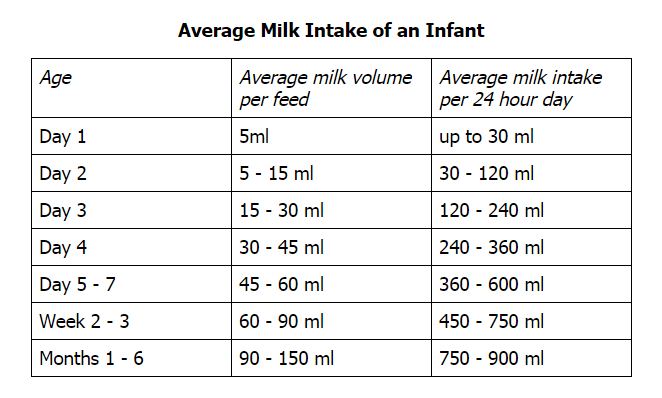
Instead, you should teach them to trust their own feelings and instincts, so that they understand their own hunger better when they grow into childhood.
If you want an idea of how to work foods like this into your baby's diet, here's an example of what your baby might eat in a day:
| Meal | Food | |
| Breakfast | Oatmeal with pureed fruit | |
| Lunch | Lentil soup with boiled carrots | |
| Dinner | Mashed potato with tuna mayo | |
| Snacks | A couple of tablespoons of yogurt, smoothie, or applesauce |
Of course, the menu is up to you, and you may even find that your baby can eat slightly altered versions of dishes that you might eat yourself!
Baby feeding - key takeaways
When it comes to feeding your baby, things can get a little complicated; from choosing between breast milk and formula feeding to knowing how much milk to feed your baby and keeping on top of the milk supply, it isn't always simple! But don't worry - here are the most important points we've talked about today when it comes to feeding your little one:
-
Your baby's stomach starts out tiny and starts to grow quickly, so expect to start with more frequent, smaller feedings before moving onto larger amounts with longer stretches of time in between
-
Formula-fed babies on average take fewer feedings per day than breastfed babies and will eat a little more in a single sitting
-
Babies can begin eating some solid foods from 6 months, but you should start slow with pureed single-ingredient foods to work out their likes and dislikes, as well as any potential allergies
-
You should pay attention to your baby's unique needs and feed them when they're hungry - while tables can be useful to give you a rough idea of how much babies eat on average, it's fine if they don't 100% apply to your little one's own habits!
Most asked questions about baby feeding
How many ounces of pumped breastmilk should a newborn eat?
When your baby is first born, their stomach is only the size of a marble, stretching out over the first few weeks of their life. This means that they should be fed little and often - around every two or three hours. If you're bottle-feeding your newborn baby, you should only give them 0.5 ounces of breast milk during each feeding for the first few days of their life, gradually increasing the amount as their stomach capacity (and hunger) grows.
This means that they should be fed little and often - around every two or three hours. If you're bottle-feeding your newborn baby, you should only give them 0.5 ounces of breast milk during each feeding for the first few days of their life, gradually increasing the amount as their stomach capacity (and hunger) grows.
How do I know if my baby needs more ounces?
A general rule of thumb is to feed your baby when they're hungry and crying out for more food- though tables and statistics can be helpful, your baby is unique, and you should always put their needs above following a strict routine that may only work for some parents.
If your baby needs more milk, there's a good chance they'll let you know by crying more frequently. Remember, a hunger cry is rhythmic and repetitive, almost like a siren, and your baby may also turn to your breast or raise their hand to their mouth.
How do you calculate how many oz a baby should drink?
The recommended milk intake depends on whether they're drinking breast milk or formula.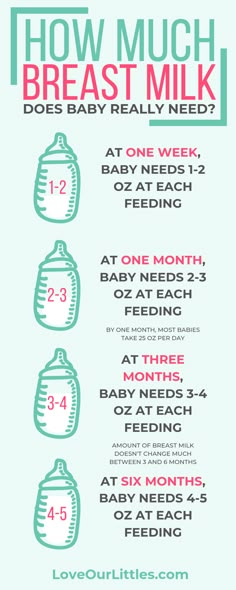 For formula-fed babies, the American Academy of Pediatrics states that your little one should drink two and a half ounces of formula for every pound of body weight. When it comes to pumped breast milk, you might find that your baby drinks this amount in more frequent, smaller feedings.
For formula-fed babies, the American Academy of Pediatrics states that your little one should drink two and a half ounces of formula for every pound of body weight. When it comes to pumped breast milk, you might find that your baby drinks this amount in more frequent, smaller feedings.
On the other hand, it can be difficult to figure out how much milk breastfed babies are drinking during each feed, so you may want to feed them according to their own natural rhythms and when they become hungry.
How much does the average 2-month-old drink?
At 2 months old, your baby will typically be drinking around 2 ounces of breast milk or formula during each feeding, and having each feeding every 3 or 4 hours per day. This adds up to around 12-16 ounces of milk per day!
However, if your own 2-month-old is drinking more or less than this, that doesn't mean that you need to worry. Every baby is different, and as long as they're healthy and have a good appetite, you don't need to worry too much about the exact amount they're drinking.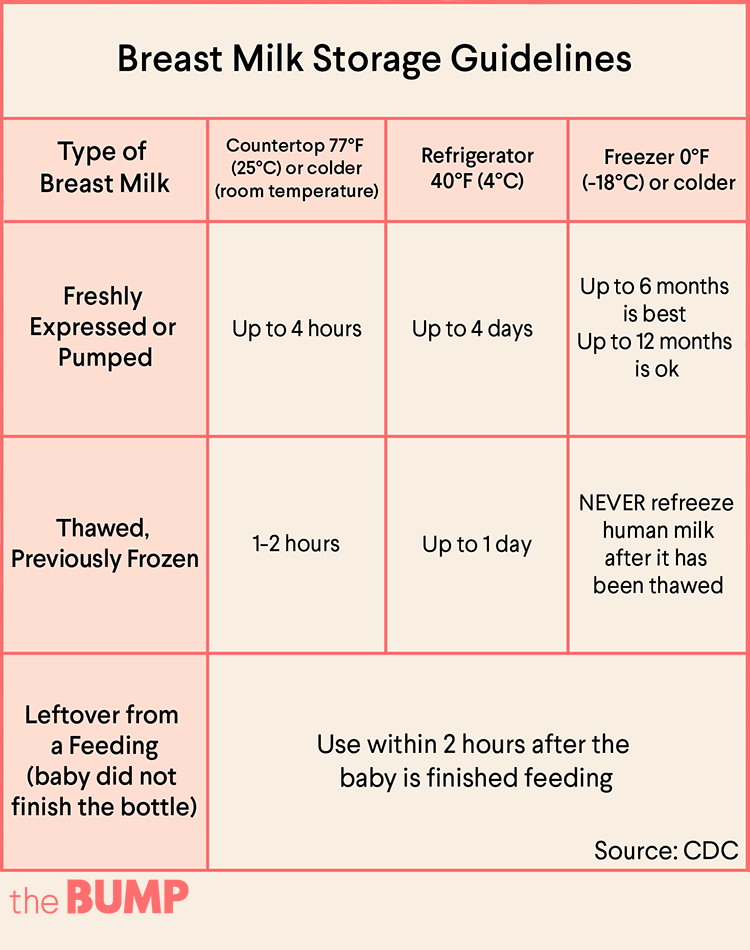 If you're concerned about their eating habits, you should contact your pediatrician for medical advice.
If you're concerned about their eating habits, you should contact your pediatrician for medical advice.
Is 6oz too much for a 2-month-old?
Generally speaking, a 2-month-old baby will drink about 2 ounces of milk per feeding, adding up to around 12-16 ounces of milk per day, so 6 ounces all at once may be a little too much for their stomach to handle.
But if your baby prefers fewer, larger feedings, then 6 ounces might make sense - at the end of the day, it's all about what works for your baby and your family, rather than what statistics and charts say you should do. After all, you know your little one best!
When should my baby eat 4 oz?
The amount of breast milk or formula your baby eats in a single feed will increase as they grow and develop. For instance, while a newborn can only stomach a teaspoon or so of milk during their first feeding, this will increase to 2 whole ounces by the time they're 2 weeks old!
Broadly speaking, your baby will be able to eat 4 ounces per feeding by the time they're 3 or 4 months old, but don't take this number too seriously.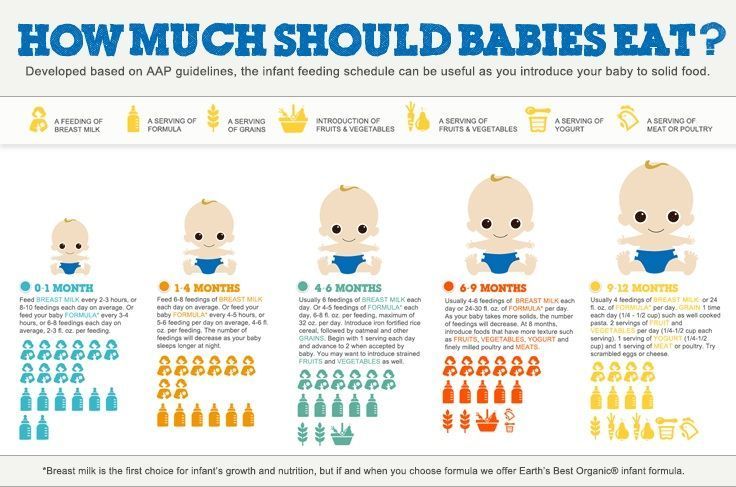 All babies are unique, and while one parent might find that their 5-month-old can just about manage 4 ounces, another might discover that their baby wants more than this at 3 months!
All babies are unique, and while one parent might find that their 5-month-old can just about manage 4 ounces, another might discover that their baby wants more than this at 3 months!
How much milk should I be producing for a 3-week-old?
At 3 weeks old, your baby should be drinking around 2 ounces of milk per feeding every 3 or 4 hours, though your baby's milk intake might vary according to factors like their weight and whether they're drinking breast milk or formula. In terms of milk production, you should aim to pump between 25 and 35 ounces of breast milk within a 24-hour span if you're exclusively pumping.
However, it's worth noting that this isn't possible for every woman, and that not all parents have access to breast milk, so don't worry too much about what you 'should' be doing. All that matters is that your baby is happy and healthy, whether that's through breast milk or formula!
Is it OK to formula feed instead of breastfeeding?
Absolutely! Here's a saying we love to use instead of breast is best: fed is best. Many women struggle to breastfeed for a wide range of reasons, while single fathers or adoptive parents may not have the option at all. There are many benefits to breastfeeding, but your baby being healthy is what's important - if you need formula to reach that goal, then definitely use it.
Many women struggle to breastfeed for a wide range of reasons, while single fathers or adoptive parents may not have the option at all. There are many benefits to breastfeeding, but your baby being healthy is what's important - if you need formula to reach that goal, then definitely use it.
Is it OK to feed a swaddled baby?
Absolutely! If your baby is waking up from a nap hungry, or wanting to be fed before she goes to sleep, leaving them in the swaddle makes the most sense for many parents and is perfectly safe to do. In fact, swaddling your baby before you feed them makes sense for many parents as it helps them to calm down, which is especially useful if they're going to be put to bed right after!
If you're looking for a swaddle to help soothe your newborn to sleep, we can't recommend our own Zen Neo swaddle pod highly enough! A womb-like shaped pod that helps to ease your baby's transition to the big new world around them, this swaddle also features a gently weighted pad to mimic your soothing touch and help your little one fall asleep all by themselves.
Should I swaddle my baby before or after feeding?
This really depends on what makes sense for your own baby! For instance, while some babies may become too sleepy and cozy to eat after they've been swaddled, others may become agitated if you try to swaddle them right after they've been fed. Every baby is different, and your swaddling habits will likely reflect this, so do whatever works best for you and your little one!
Should I unswaddle for dream feed?
If you don't already know, a dream feed is when you feed your baby while they're still pretty much asleep, but just awake enough to be able to latch on and drink. A well-timed dream feed can prevent other wakeups throughout the night, meaning more sleep for both you and your baby - if you want to know more, check out our blog all about dream feeds!
Because you want your baby to remain mostly asleep during the feeding, you'll want to disrupt them as little as possible - therefore, removing them from the swaddle likely isn't the best move, as it's almost certain to wake them up! On the other hand, if they aren't awake enough to latch, you may want to unswaddle them as a way of waking them up a little more - it's all about finding the right balance of awake but drowsy.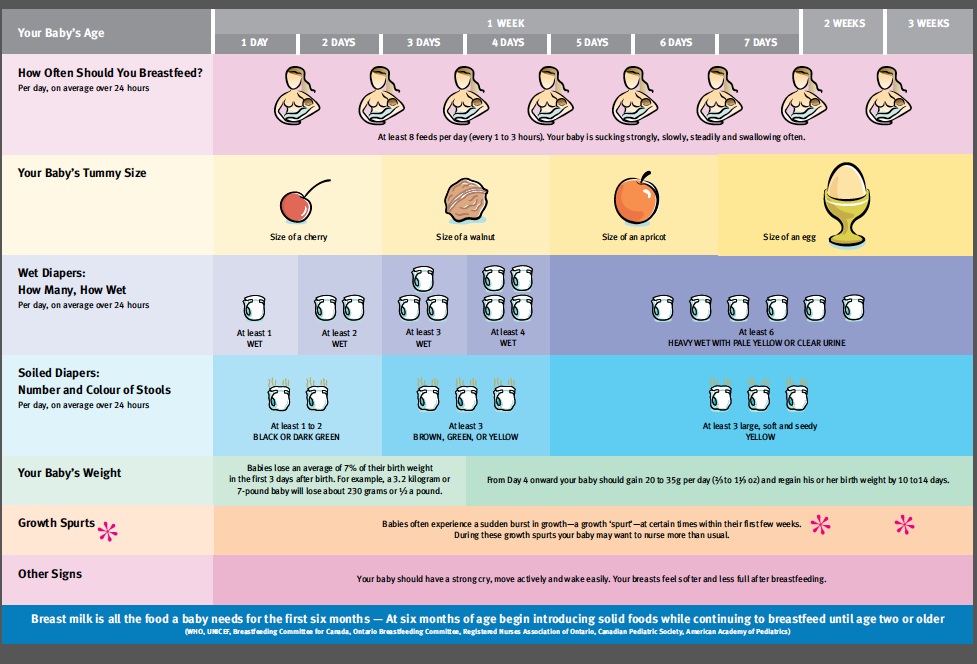
You Might Also Like
https://www.nestedbean.com/blogs/zen-blog/when-do-babies-start-rolling-over
https://www.nestedbean.com/blogs/zen-blog/baby-sleeping-on-side
https://www.nestedbean.com/blogs/zen-blog/7-ways-to-make-your-baby-smarter-before-birth
Other Resources
https://www.healthychildren.org/English/ages-stages/baby/feeding-nutrition/Pages/How-Often-and-How-Much-Should-Your-Baby-Eat.aspx
What is normal breastfeeding? | Interview with Dr. Jacqueline Kent
It can be difficult for new mothers to understand if breastfeeding is going well, so we decided to ask the expert if it is possible to talk about the norms when it comes to breastfeeding.
Share this information
Dr Jacqueline Kent, Research Fellow, Hartmann Human Lactation Research Group:
Jacqueline joined the University of Western Australia research team in 1986 and received her PhD in 1999. She is currently researching the biochemical and physiological aspects of breast milk synthesis and release in search of scientific information to help mothers breastfeed longer.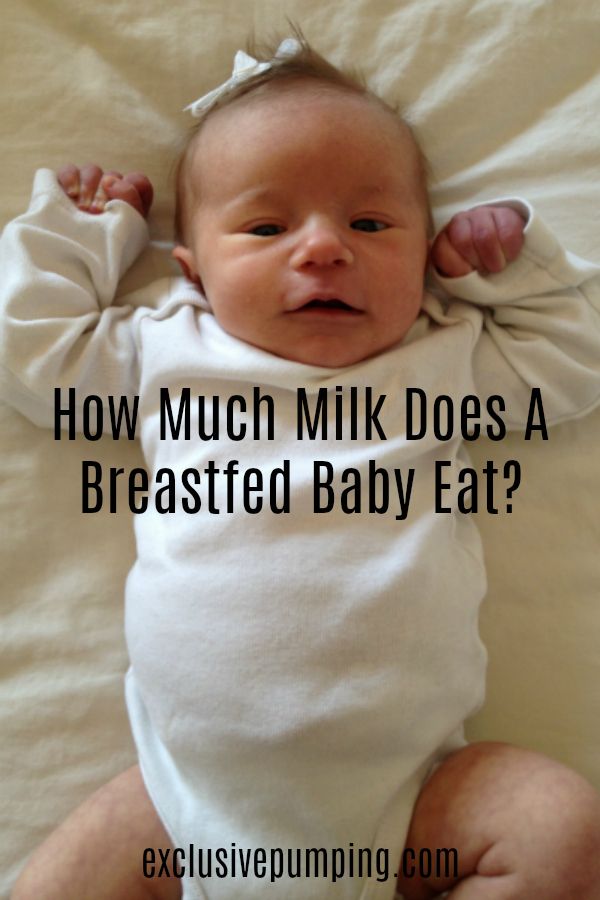
Dr. Jacqueline Kent and her colleagues have been studying breastfeeding for many years. As it turned out, for all mothers and babies, this process occurs in its own way.
What were the most surprising results of your research?
Variety. It turns out that the limits of the norm are extremely wide.
We are used to textbooks that say that an infant should eat 8-12 times a day and gain 150 grams per week. But babies don't read textbooks and do things their own way! Some gain weight more slowly, others very quickly.
We observed infants aged one to six months who were exclusively breastfed. As our studies have shown, on average, a child is breastfed 4 to 13 times a day, and the duration of one feeding varies from 12 minutes to 1 hour. 1
How much milk do breastfed babies usually consume?
According to our research, the volume of milk consumed by baby
ranges from 54 to 234 ml per feeding. 1
Sometimes it seems to the mother that the baby ate well, but when weighed, it turns out that he ate very little milk.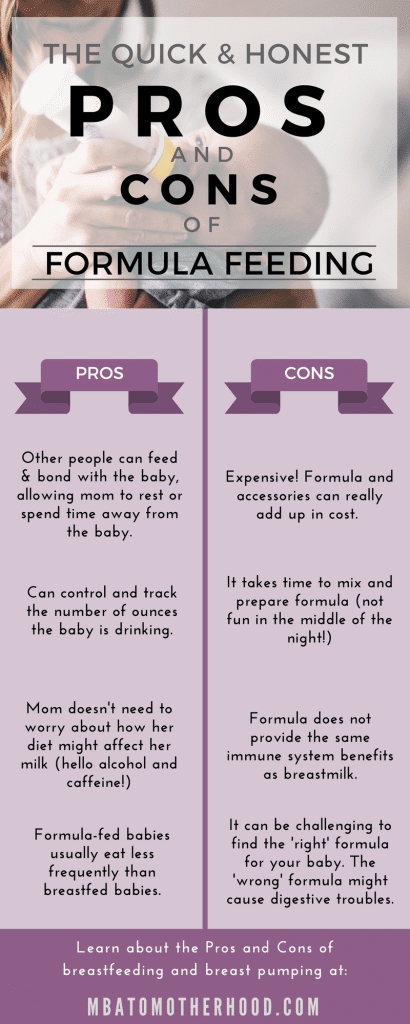 And it happens the other way around: the child is distracted, breastfeeds for only a few minutes and still eats 100 ml of milk. Even if the baby is restless, this does not mean at all that he is malnourished.
And it happens the other way around: the child is distracted, breastfeeds for only a few minutes and still eats 100 ml of milk. Even if the baby is restless, this does not mean at all that he is malnourished.
All babies are different, but they all get the amount of milk they need in one way or another. One needs 500 ml of milk per day, while others eat up to 1356 ml!
By the way, boys on average eat 76 ml more milk per day than girls. The main thing is that you have enough milk, and the baby will decide when and how much he will eat.
Should I offer my baby a second breast?
I advise offering the second breast to the baby after the first has been completely emptied. If he accepts it, then he hasn't finished eating. If not, don't worry. Let the baby decide for himself - only he knows when he is full. According to our research, 30% of babies get enough milk from one breast, 13% eat from two breasts at each feed, and 57% from time to time. 1
How do you know if a baby is getting enough milk?
In my experience, mothers often blame themselves for not producing enough milk. Ask yourself: Is my child growing? Is he putting on weight? Is he cheerful? Is his skin healthy? How often does he get diapers dirty? If the answer is “yes”, then the baby is getting enough milk, no matter if he eats a lot or a little.
Ask yourself: Is my child growing? Is he putting on weight? Is he cheerful? Is his skin healthy? How often does he get diapers dirty? If the answer is “yes”, then the baby is getting enough milk, no matter if he eats a lot or a little.
What is the most common misconception about breastfeeding?
Mothers usually think that the older the child gets, the more often
he needs to be fed and the more milk he will eat. They are often surprised to learn that between the 4th and 26th weeks, total milk production normally does not change. 2
In the first few months, the baby grows very quickly and his metabolism is accelerated. The milk that the child consumes during this period is almost completely used for growth and maintenance of metabolism.
Between the ages of three and six months, metabolism slows down and growth slows, so the same amount of milk is sufficient for the baby. In other words, the baby does not have to consume more and more milk as they grow older. On the contrary, feedings become shorter and less frequent, but at the same time the child receives the same amount of milk, because he suckles better.
On the contrary, feedings become shorter and less frequent, but at the same time the child receives the same amount of milk, because he suckles better.
Do studies say anything about the age at which breastfed babies start sleeping through the night?
Most babies need to be fed at night.
A baby's stomach is not large enough to go all night without a feed, and breast milk is digested very quickly. Therefore, it is natural for the baby to wake up at night - and this usually continues for at least the first six months. Feeding at night is normal. When you feed your baby at night, do not even hesitate - all over the world at this moment other mothers of babies of the same age are doing the same. Be patient - it usually only lasts a few months. 1
What worries new mothers the most during the first few weeks of breastfeeding?
The most common concern is whether the baby latch on properly, sucks well, and is full during feeding. Often mothers also worry about sore nipples. The main thing is to find the right position for feeding from the very beginning and ensure that the baby is latching on correctly. Practice shows that this significantly affects the flow of milk and the convenience of feeding.
The main thing is to find the right position for feeding from the very beginning and ensure that the baby is latching on correctly. Practice shows that this significantly affects the flow of milk and the convenience of feeding.
What breastfeeding symptoms should be of concern?
Milk production usually returns to normal levels two weeks after birth. If the child does not begin to gain weight on the fifth or sixth day of life, it's time to sound the alarm. You should contact your doctor to make sure that milk is being produced and that its composition is changing from colostrum to mature breast milk.
What advice would you give to a new breastfeeding mother?
Try to ensure skin-to-skin contact with the baby as soon as possible after delivery. If possible, feed your baby within the first hour of life, or at least breastfeed. As soon as possible, contact a specialist to correct the position and grip of the breast during feeding and thus avoid damage to the nipples.
Feed frequently. Young mothers do not immediately succeed in correctly recognizing the signals that the child gives. Be sure to feed your baby on demand, and not at set intervals. Offer the breast as soon as you notice any signs of hunger - as a rule, the baby suckles better when he is calm. If he cries, it is more difficult for him to take the breast. If you are not sure what the child wants, offer him the breast. He decides whether he wants to eat or not.
To learn more about Dr. Kent's research, download infographic "How to determine the limits of normal when it comes to breastfeeding" or see it below.
Literature
1 Kent JC et al. Volume and frequency of breastfeedings and fat content of breast milk throughout the day. Pediatrics . 2006;117(3): e 387-395. - Kent J.S. et al., "Amount and frequency of breastfeeding and fat content of breast milk during the day." Pediatrix (Pediatrics). 2006;117(3):e387-95.
2006;117(3):e387-95.
2 Kent JC et al. Longitudinal changes in breastfeeding patterns from 1 to 6 months of lactation. Breastfeeding Medicine . 2013;8(4):401-407. - Kent J.S. et al., Longitudinal changes in breastfeeding patterns from 1 to 6 months of lactation. Brest Med. 2013;8(4):401-407.
Breastfeeding after 1 month: what to expect
Do you know when breast milk production stabilizes? And how does the frequency and duration of feedings change as the baby grows? You will find answers to these questions in our recommendations for breastfeeding after the first month.
Share this information
Congratulations: You made it through the first month of breastfeeding. Your breast milk has reached full maturity 1 , its production is stabilizing and there is little or no leakage from the breast. Don't worry, it's not getting less milk, it's just that your breasts are better able to produce and store it now. 2 At the age of six weeks, your baby will begin to delight you with his charming toothless smiles, and by two months you will already have 500-600 feedings behind you. With a favorable development of events, problems with latch on by this point will already be resolved, and you can simply enjoy the convenience and benefits of breastfeeding.
2 At the age of six weeks, your baby will begin to delight you with his charming toothless smiles, and by two months you will already have 500-600 feedings behind you. With a favorable development of events, problems with latch on by this point will already be resolved, and you can simply enjoy the convenience and benefits of breastfeeding.
When does breastfeeding decrease?
The "normal" feeding frequency for babies aged one to six months varies considerably, with some needing four times a day, others asking to be breastfed 13 times a day. 3
“From the age of one month, the amount of milk a baby consumes per feed increases, so that he can go without food for longer,” explains Cathy Garbin, a recognized international expert on breastfeeding, “A baby’s stomach grows, so he eat more at one time. In addition, mature milk allows him to stay full longer.”
Feeding can last from 12 minutes to one hour -
the habits of babies vary so much! 3 But if the child is gaining weight and falls within this range, there is no cause for concern.
What is most surprising, no matter how often the baby eats, he consumes approximately the same amount of milk per day - both at one month and at six, when it is time to start complementary foods with solid food. 4
“However, sometimes the baby eats more and sometimes less, especially when he is unwell. It’s better to just listen to his needs,” Katie explains.
Is breast milk enough for the first six months?
Yes. Breast milk contains everything a baby needs for the first
six months of life - exclusively breastfed babies don't even need to drink water! 5 Until about six months of age, a child's digestive system is simply not adapted to the digestion of solid food, and he will be able to drink cow's milk only after a year.
In addition, breastfeeding during this period prepares the child for further development. It strengthens the muscles of the mouth, develops the jaw and helps straighten the teeth 6.7 .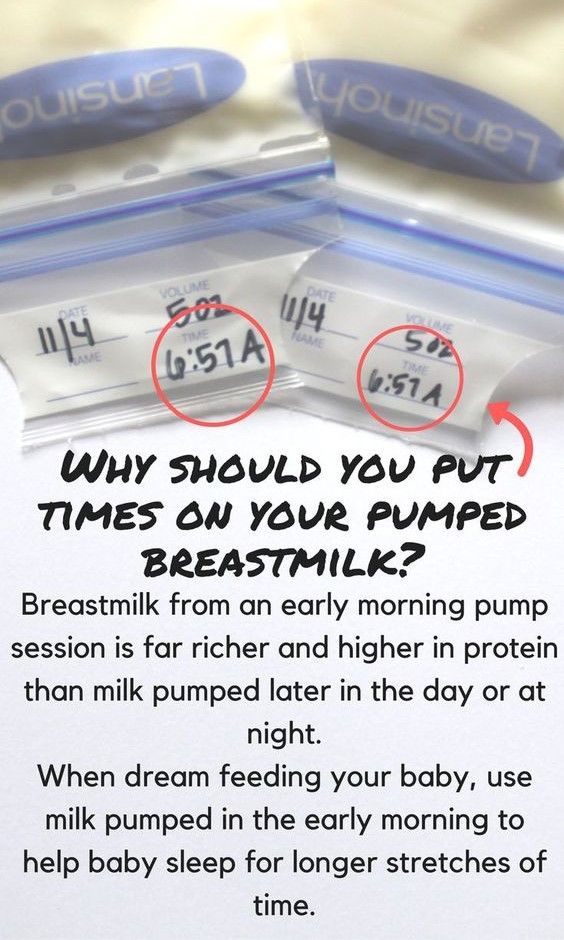 All this will come in handy when the baby begins to eat and talk. And because what you eat and drink affects how your breast milk tastes, your baby discovers new tastes even before he starts eating solid foods. 8
All this will come in handy when the baby begins to eat and talk. And because what you eat and drink affects how your breast milk tastes, your baby discovers new tastes even before he starts eating solid foods. 8
In addition, when your baby is sick, your body produces breast milk that is
rich in antibodies that help fight infection. 9 In other words, milk continues to protect the baby for many months as he grows and becomes more active.
Breastfeeding is also very comfortable once you get used to it. Claudia, a mother of two from the UK, notes: “No need to sterilize a mountain of bottles, prepare formula, carry it all with you, warm it up - in general, breastfeeding turned out to be very convenient, especially when my babies grew up and we began to leave the house more often. ".
At what age does a breastfed baby start sleeping through the night?
Waking up at night is normal for babies. Most babies between the ages of one and six months consume a fifth of their daily milk requirement at night, so nighttime feedings should not be neglected if you want your baby to get the required amount of calories.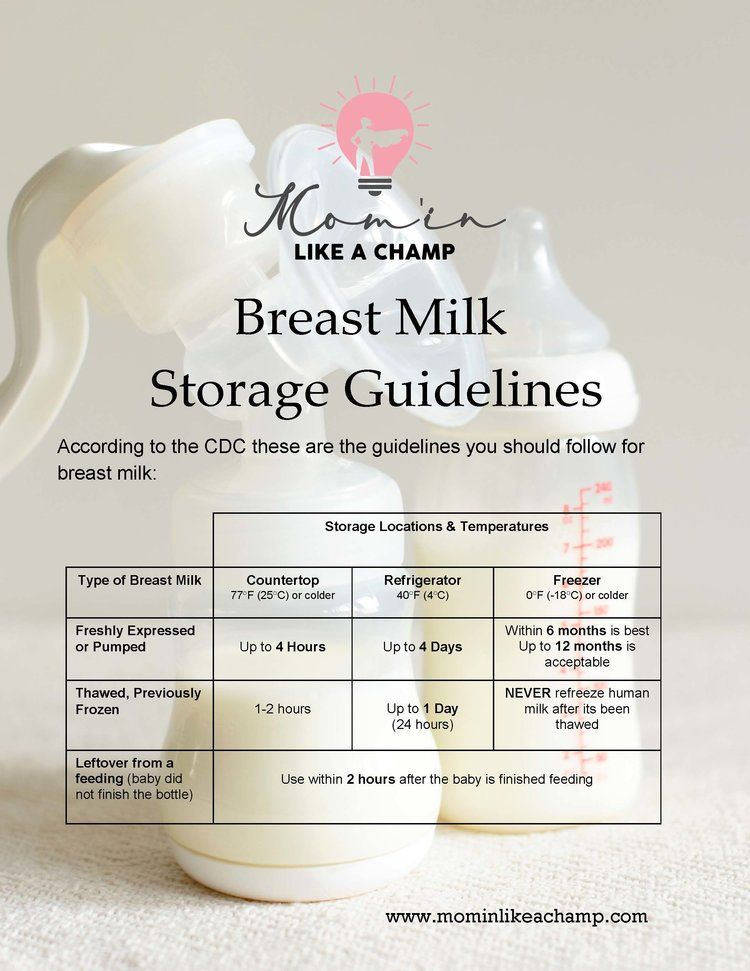 3
3
"It really depends on what you mean by 'sleep through the night,'" says Cathy. "And it's better than waking up every two hours anyway! I have met infants who, starting at six weeks old, fell asleep at 19:00 and woke up at 7:00, but most continue to wake up frequently at night after this age. All children are different."
In Wales, a study of over 700 babies found that almost 80% of children aged 6 to 12 months wake up at least once a night, and 25% of them wake up three times or more. And it did not depend on what type of feeding the child is on - breastfeeding or artificial. 10
And if nighttime awakenings are unavoidable anyway, breastfeeding is at least comfortable! Maina, a mother of two from Australia, agrees: “You can even take a nap while feeding in the middle of the night - both the body and the baby do their job on autopilot. No need to plan, measure, sterilize anything - ready-made food at the right temperature is right in your chest. I think it's ideal."
I think it's ideal."
My child wakes up more often. Perhaps he is hungry?
Around four months of age, a baby's sleep pattern changes as he, like an adult, develops deep and light sleep phases. Because of this, he may wake up more often at night. “At four months, sleep is more of a problem than feeding,” Cathy admits. “It can be exhausting, but try to adapt and be patient.”
Some people call this " a four-month sleep regression ", but "progress" is more appropriate here. From the outside it may look like a step back, but in fact the child is approaching an important stage of development. He learns quickly, begins to become aware of the world around him, his perception is sharpened and, perhaps, there is anxiety about being separated from his mother. Crying when waking up and being able to eat milk cuddled up to mommy’s chest is a way for a baby to calm down. 11–13
Resist the urge to “supplement” your baby with formula or start solid foods early
in an attempt to improve his sleep. Breast milk contains
Breast milk contains
hormones that make you sleepy and help you both relax
. Studies show that breastfeeding mothers actually sleep longer at night than formula- or formula-fed mothers
. 14
How does teething affect breastfeeding?
Teething usually begins around four months of age. When a baby has gum pain, he becomes restless, throws his chest and cries. All this, of course, is unpleasant.
However, breastfeeding can be an excellent sedative.
Studies have shown that babies who are breastfed
during the vaccination period cry less and forget pain more quickly. 15 Breastfeeding during teething can have the same calming effect.
An unpleasant side effect may be the child's attempts to try out his new teeth on the mother's breast. “Sometimes children flirt and bite their mother’s nipples. This can be felt in advance by how the behavior of the child changes when feeding: before biting, he removes his tongue, explains Cathy, “Usually this is not a problem and only happens a couple of times. It is enough to stop feeding, affectionately say that biting is not good, and the baby will soon leave this fun.
It is enough to stop feeding, affectionately say that biting is not good, and the baby will soon leave this fun.
How to continue feeding if you have to be separated from the baby?
It happens that during the first six months, when the baby is still fully breastfed, the mother needs to be away for several hours - or even longer if she has to go to work or go away on business for a couple of days.
But this does not mean that you should stop breastfeeding. You can still feed your baby healthy breast milk - just express it and have someone give it to your baby when you're away. Here's Kathy's advice:
“Start expressing milk a couple of days in advance, in small batches, 40-60 ml at a time. So you will have the necessary supply for the time of your absence, but at the same time the amount of milk produced will remain the same.
If you have to return to work, check with your employer about your daily schedule. Many mothers breastfeed their babies in the morning, evening and night, and pump milk at lunchtime to relieve discomfort and create a reserve for the next day.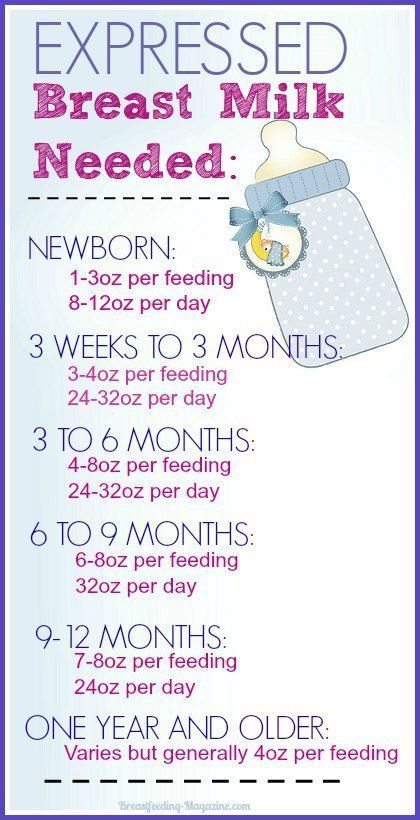
This usually turns out to be much easier than one might think, and today many companies are well placed to do this, notes Cathy. “Breast pumps make it easy to solve this problem.”
Natalie, mother from the USA, shares her experience: “I feed Dylan as soon as he wakes up, and sometimes again before leaving for work, in order to maintain milk production and not lose contact with the child. At work, I pump twice the next day (in my absence, he eats two bottles of breast milk), and after work I rush home for the evening feed. I don't pump on the weekends - we resume regular breastfeeding."
Is it possible to continue breastfeeding after the introduction of solid foods?
When your baby begins to show interest in food and can sit up on his own - usually around six months of age - it's time to start solid foods. However, it is not necessary to stop breastfeeding, Cathy explains: “A baby’s iron stores during pregnancy are depleted by six months, so he needs additional sources of this element.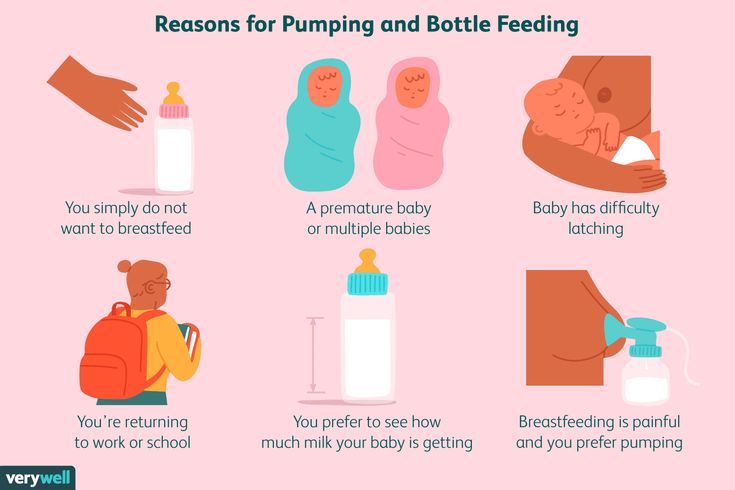
Start complementary foods with solid foods, but remember that breast milk remains a more important source of calories and nutrients until the baby is eight to nine months old. By this time, he will be eating much more solid food, but he will still need to breastfeed four to five times a day. By 12 months, the frequency of feeding may be two to six times a day. All babies are different, and many of them at this age are still getting half their daily calorie intake from breast milk.”
Don't forget that breast milk can be added to solid foods such as cereals and purees so that the baby can taste familiar tastes. If possible, use milk expressed just before feeding (not thawed) and add just before serving to keep bacteria and nutrients alive. 16
You may be pressured by others to stop breastfeeding when your baby is six months old, but the longer you breastfeed or pump, the better for you and your baby.
How long can I continue breastfeeding?
“The World Health Organization recommends breastfeeding along with solid foods until at least two years of age because it plays an important role in supporting immunity,” says Cathy. feels bad".
feels bad".
At eight months, the baby sometimes breastfeeds four times a day, but when he is one year old, the frequency of feedings can be reduced to two times a day. You yourself will understand which feeding regimen is more suitable for you and your baby. For example, Jane, a mother of two from the US, breastfed until the age of two: “I breastfed when I was at home - in the evenings and on weekends, when the children wanted to be close to me,” says Jane, “It helped a lot when they were sick . Breastfeeding has become my favorite form of comfort."
“When my son got a little older and bolder, he still often asked me to breastfeed him - as if to calm down and gain strength,” recalls Amy, a mother of two children from Canada, “When he happened to hit or skin his knee , breastfeeding was a wonderful way to comfort him.”
If your baby is over a year old and you are still breastfeeding, people around you will probably tell you that this way he will never wean. But if children are not pressured, they usually refuse to breastfeed themselves between the ages of two and four.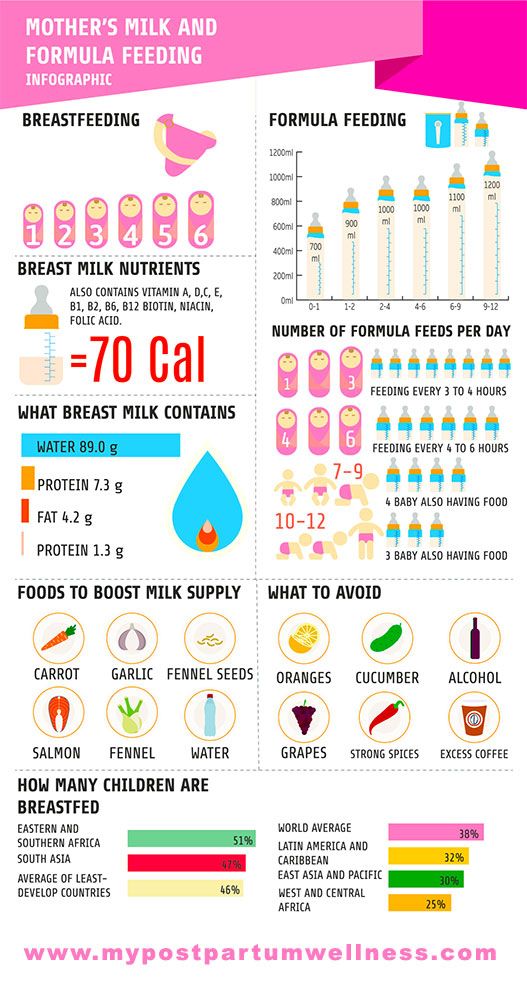 17
17
“I didn’t intend to breastfeed for so long, but as a result, I still breastfeed my four-year-old daughter and 22-month-old son,” says Suzanne, mother of two from the UK, “I breastfeed my youngest before and after work, and in I express milk on business trips. The eldest daughter likes to breastfeed a little before bed or when she is upset - this is a great way to make contact. When I get tired of it, I remind myself what great benefit and comfort it brings them. I now plan to pursue a baby-initiated end breastfeeding strategy — let them decide when to stop.”
For more information on what to expect and lots of tips and tricks, see our guide Breastfeeding Problems After the First Month.
Literature
1 Ballard O, Morrow AL. Human milk composition: nutrients and bioactive factors. Pediatr Clin North Am . 2013;60(1):49-74. - Ballard O., Morrow A.L., "Composition of breast milk: nutrients and biologically active factors.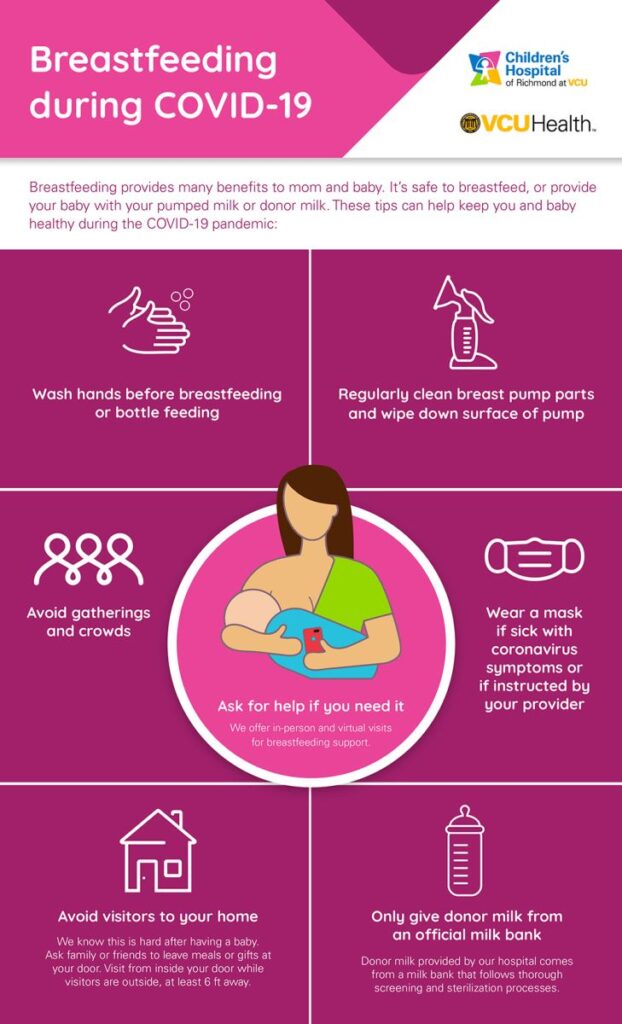 " Pediatrician Clean North Am. 2013;60(1):49-74.
" Pediatrician Clean North Am. 2013;60(1):49-74.
2 Kent JC et al. Principles for maintaining or increasing breast milk production. 2012;41(1):114-21. - Kent J.S. et al., "Principles for Maintaining and Increasing Milk Production". J Obstet Ginecol and Neonatal Nurse. 2012;41(1):114-121.
3 Kent JC Volume and frequency of breastfeedings and fat content of breast milk throughout the day. Pediatrics. 2006;117(3): e 387-395. - Kent J.S. et al., "Amount and frequency of breastfeeding and fat content of breast milk during the day." Pediatrix (Pediatrics). 2006;117(3):e387-95.
4 Kent JC et al. Longitudinal changes in breastfeeding patterns from 1 to 6 months of lactation. Breast Med . 2013;8(4):401-407. - Kent J.S. et al., Longitudinal changes in breastfeeding patterns from 1 to 6 months of lactation. Brest Med. 2013;8(4):401-407.
Brest Med. 2013;8(4):401-407.
5 Almroth S, Bidinger PD. No need for water supplementation for exclusively breast-fed infants under hot and arid conditions. Trans R Soc Trop 1990;84(4):602-604. - Elmroth S., Bidinger P.D., "No need for supplementation of exclusively breastfed infants in hot, dry conditions." Trans R Sots Trop Med Hyg. 1990;84(4):602-604.
6 Victora CG et al . Breastfeeding in the 21st century: epidemiology, mechanisms, and lifelong effect. Lancet. 2016;387(10017):475-490. - Victor S.J. et al., "Breastfeeding in the 21st century: epidemiology, mechanisms and long-term effects". Lancet 2016;387(10017):475-490.
7 Peres KG et al. Effect of breastfeeding on malocclusions: a systematic review and meta - analysis.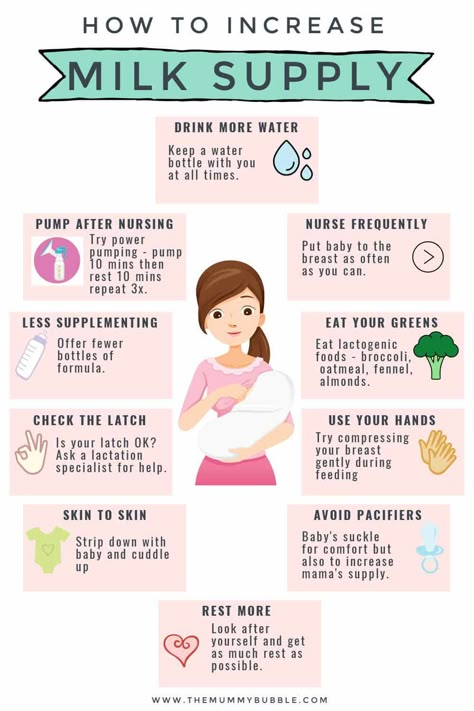 Acta Paediatr. 2015;104( S 467):54-61. - Perez K.G. et al., "The impact of breastfeeding on malocclusion: a systematic review and meta-analysis". Akta Pediatr. 2015;104(S467):54-61.
Acta Paediatr. 2015;104( S 467):54-61. - Perez K.G. et al., "The impact of breastfeeding on malocclusion: a systematic review and meta-analysis". Akta Pediatr. 2015;104(S467):54-61.
8 Mennella JA, Beauchamp GK. Maternal diet alters the sensory qualities of human milk and the nursling's behavior. Pediatrics. 1991;88(4):737-744. - Mennella, JA, Beauchamp, GK, "Maternal nutrition influences the organoleptic properties of breast milk and infant behavior." Pediatrix (Pediatrics). 1991;88(4):737-744.
9 Hassiotou F et al. Maternal and infant infections stimulate a rapid leukocyte response in breastmilk. Clin Transl immunology. 2013;2(4). - Hassiot F. et al., "Infectious diseases of the mother and child stimulate a rapid leukocyte reaction in breast milk." Clean Transl Immunology. 2013;2(4).
10 Brown A, Harries V. Infant sleep and night feeding patterns during later infancy: Association with breastfeeding frequency, daytime complementary food intake, and infant weight. Breast Med . 2015;10(5):246-252. - Brown A., Harris W., "Night feedings and infant sleep in the first year of life and their association with feeding frequency, daytime supplementation, and infant weight." Brest Med (Breastfeeding Medicine). 2015;10(5):246-252.
Breast Med . 2015;10(5):246-252. - Brown A., Harris W., "Night feedings and infant sleep in the first year of life and their association with feeding frequency, daytime supplementation, and infant weight." Brest Med (Breastfeeding Medicine). 2015;10(5):246-252.
11 Infant sleep information source. [Internet]. Normal Infant Sleep Development; December 2017 [cited 2018 Feb] - All about baby sleep. [Internet] "The development of normal sleep in a child", December 2017 [cited February 2018].
12 Baby sleep science. [Internet]. The-Four-Month-Sleep-Regression-What-is-it-and-What-can-be-Done-About-it. March 2014 [ cited 2018 Feb ] - The Science of Baby Sleep. [Internet], "Four-month sleep regression: what it is and what to do about it." March 2014 [cited February 2018].
13 The Myth Of Baby Sleep Regressions – What’s Really Happening To Your Baby’s Sleep? [Internet]. Pinky Mckay ; December 2017 [ cited 2018 Feb ] - "The Myth of Baby Sleep Regression - What's Really Happening to Your Baby?" [Internet]. Pinky McKay, December 2017 [cited February 2018].
Pinky Mckay ; December 2017 [ cited 2018 Feb ] - "The Myth of Baby Sleep Regression - What's Really Happening to Your Baby?" [Internet]. Pinky McKay, December 2017 [cited February 2018].
14 Kendall - Tackett K ET Al . The effect of feeding method on sleep duration, maternal well-being, and postpartum depression. Clinical Lactation . 2011;2(2):22-26. - Kendall-Tuckett K. et al., "Influence of feeding pattern on sleep duration, maternal well-being and the development of postpartum depression." Clinical Lactation. 2011;2(2):22-26.
15) Harrison D et al. Breastfeeding for procedural pain in infants beyond the neonatal period. Cochrane Database System Rev .

